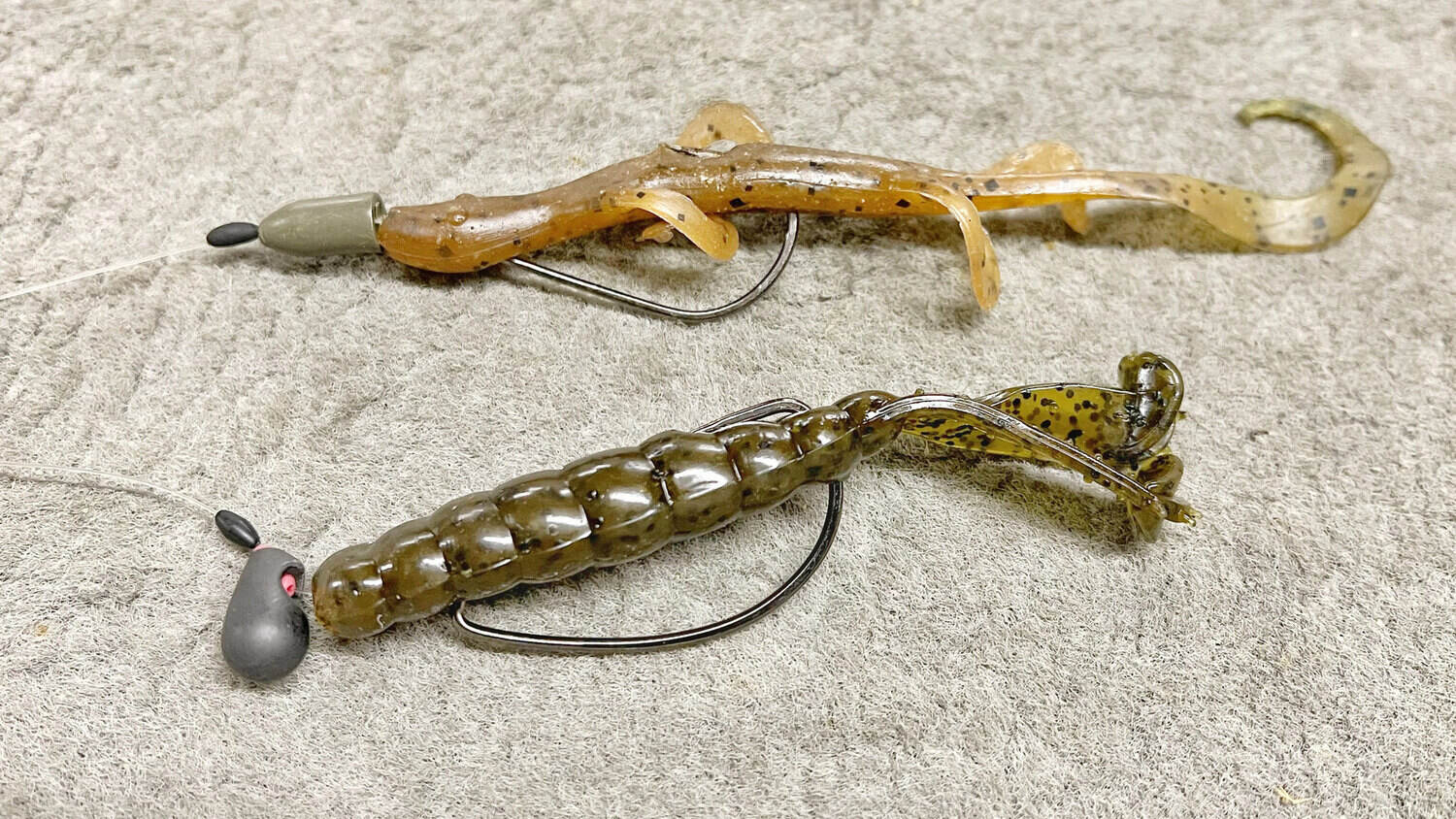

Articles
How To Store Sushi Grade Fish
Modified: August 17, 2024
Learn how to properly store sushi grade fish to maintain its freshness and flavor. Discover expert tips and techniques in this informative article.
(Many of the links in this article redirect to a specific reviewed product. Your purchase of these products through affiliate links helps to generate commission for Storables.com, at no extra cost. Learn more)
Introduction
Sushi is a beloved Japanese delicacy known for its fresh and high-quality ingredients. One of the key elements that contribute to a delicious sushi experience is the quality of the fish used. Sushi grade fish refers to the highest quality fish that is suitable for raw consumption.
However, storing sushi grade fish properly is crucial to maintain its freshness and flavor. Whether you are a sushi lover who enjoys making your own sushi at home or a professional chef wanting to ensure your fish stays in top condition, this article will guide you on how to store sushi grade fish correctly.
In this comprehensive guide, we will cover the steps to selecting sushi grade fish, the proper techniques for storing and refrigerating, freezing, packaging, thawing, and ensuring the freshness and quality of your fish. So, let’s dive in!
Key Takeaways:
- Selecting high-quality sushi grade fish is crucial for a delicious sushi experience. Look for reputable sources, inspect appearance, and consult experts to ensure top-notch ingredients.
- Properly storing, refrigerating, and freezing sushi grade fish is essential for maintaining its freshness and flavor. Follow guidelines for optimal sushi enjoyment.
Read more: How To Store Sushi Bake
Selecting Sushi Grade Fish
When it comes to sushi, the quality and freshness of the fish are paramount. To ensure you are using sushi grade fish, follow these tips when purchasing your ingredients:
- Buy from a reputable source: Look for a trusted fishmonger or seafood market that specializes in providing sushi grade fish. They should have a good reputation for sourcing high-quality seafood.
- Ask about the source and handling: Inquire about where the fish is sourced from and how it is handled. Sushi grade fish should ideally be handled with care to maintain its freshness and kept at the appropriate temperature.
- Look for specific labels: Some fish markets and suppliers may have specific labels or certifications indicating that the fish is sushi grade or suitable for raw consumption. These labels can provide further assurance of quality.
- Inspect the appearance: The visual appearance of the fish can be an indicator of its freshness. Look for vibrant color, clear eyes, and shiny skin. The fish should have a firm texture and smell clean and oceanic.
- Consult with sushi chefs or seafood experts: If you are unsure about which fish are suitable for sushi, it can be helpful to consult with sushi chefs or seafood experts. They can provide insights into the best choices for sushi and even recommend specific varieties based on your preferences.
By following these guidelines, you can ensure that you are selecting high-quality sushi grade fish for your culinary endeavors.
Storing Sushi Grade Fish
Properly storing sushi grade fish is vital to maintain its freshness, flavor, and texture. Here are some essential tips to keep in mind when storing your sushi grade fish:
- Keep it chilled: Fish is highly perishable, so it’s important to keep it chilled at all times. As soon as you bring home your sushi grade fish, place it in the refrigerator immediately.
- Use airtight containers: To prevent any cross-contamination and to maintain the fish’s quality, store it in airtight containers. This helps to minimize exposure to air, which can cause the fish to deteriorate more quickly.
- Separate different types of fish: If you have multiple types of sushi grade fish, it’s recommended to store them separately. This prevents any mixing of flavors and helps to maintain the individual characteristics of each fish.
- Label and date your containers: Ensure you label each container with the type of fish and the date of storage. This will help you keep track of the freshness and prevent any confusion later on.
- Place in the coldest part of the refrigerator: The coldest part of your refrigerator is usually the back area. Store your sushi grade fish there to maintain a consistent and low temperature.
- Check and discard any spoiling fish: Regularly inspect your stored fish for any signs of spoilage, such as a foul odor, sliminess, or discolored flesh. If you notice any of these signs, it’s important to discard the fish immediately to prevent any foodborne illnesses.
- Rotate the fish: If you have multiple fillets or pieces of fish, remember to rotate them to ensure equal exposure to cool air. This helps to maintain uniform freshness among all the pieces.
By following these storing tips, you can help to preserve the quality and freshness of your sushi grade fish for longer periods.
Refrigeration Tips
Refrigeration is a crucial aspect of storing sushi grade fish. Proper refrigeration helps to maintain the freshness, texture, and flavor of the fish. Here are some essential tips to follow when refrigerating your sushi grade fish:
- Set the refrigerator temperature: The ideal temperature for storing sushi grade fish is between 32°F (0°C) and 38°F (3°C). Use a thermometer to ensure that your refrigerator is set to this range.
- Store in the coldest part of the refrigerator: Place the fish in the coldest section of your refrigerator, usually the back area. This ensures a consistent and optimal storage temperature.
- Don’t overcrowd the refrigerator: Avoid overloading your refrigerator with too many items, as this can affect its cooling efficiency. Leave enough space for proper air circulation around the fish.
- Keep fish away from strong odors: Fish can easily absorb strong odors from other foods in the refrigerator. Store your sushi grade fish away from strong-smelling items like onions, garlic, or pungent cheeses.
- Wrap the fish properly: Use plastic wrap or aluminum foil to wrap the fish tightly before placing it in an airtight container or storage bag. This helps to prevent moisture loss and maintain the fish’s moisture content.
- Avoid prolonged storage: Sushi grade fish is best consumed within 24-48 hours of purchase. While refrigeration can extend its freshness, it’s still recommended to consume the fish as soon as possible for the best taste and quality.
By following these refrigeration tips, you can ensure that your sushi grade fish stays fresh and maintains its quality until you are ready to enjoy it.
Freezing Tips
If you have more sushi grade fish than you can consume within a few days, freezing can be a great option to prolong its shelf life. Follow these freezing tips to ensure that your sushi grade fish remains fresh and retains its quality:
- Choose the freshest fish: Freeze sushi grade fish as soon as possible after purchase to capture its freshness. Select the highest quality fish to freeze for the best results.
- Clean and prepare the fish: Before freezing, make sure to clean and prepare the fish properly. Remove any scales, guts, or bones and rinse it thoroughly under cold water.
- Wrap it well: Wrap the individual portions of fish tightly in plastic wrap or wax paper. This helps to prevent freezer burn and maintain the fish’s texture and flavor.
- Double wrap for extra protection: For added protection, double wrap the fish using a layer of aluminum foil over the plastic wrap. This provides an extra barrier against freezer burn.
- Label and date the packages: Always label each package with the type of fish and the date of freezing. This ensures that you can easily identify and use the oldest fish first.
- Store in the freezer: Place the wrapped fish packages in airtight freezer bags or containers to prevent any odors from seeping in. Position them in the coldest part of the freezer for optimal freezing.
- Use within recommended time frame: While frozen sushi grade fish can last for several months, it’s best to consume it within 2-3 months of freezing for the best quality. Always check for any signs of freezer burn or degradation before using.
Remember, freezing can slightly alter the texture of fish, so it’s ideal for use in sushi rolls, sashimi, or cooked sushi dishes. For the best taste and texture, thaw the frozen fish properly before using it.
When storing sushi grade fish, it is important to keep it refrigerated at a temperature of 32-38°F. Store the fish in an airtight container or wrapped tightly in plastic wrap to prevent exposure to air and moisture. Use the fish within 24 hours for the best quality.
Read more: How To Store Sushi Overnight
Proper Packaging Techniques
Proper packaging is essential to maintain the quality and freshness of sushi grade fish. Follow these packaging techniques to ensure that your fish remains protected and in optimal condition:
- Wrap tightly: Use plastic wrap or aluminum foil to tightly wrap the individual portions of fish. This helps to keep out air and prevent any moisture loss.
- Use airtight containers: After wrapping the fish, place them in airtight containers or freezer bags. This provides an additional layer of protection against air and helps to prevent any cross-contamination.
- Remove excess air: Before sealing the containers or bags, squeeze out any excess air to minimize the risk of freezer burn. This can be done by gently pressing on the plastic wrap or using a vacuum sealer for a more airtight seal.
- Label and date: Always label each container or bag with the type of fish and the date of packaging. This helps you keep track of freshness and ensures that you use the oldest fish first.
- Separate different types of fish: If you are packaging multiple types of sushi grade fish, ensure that they are stored separately to avoid any mixing of flavors or cross-contamination.
- Consider portion sizes: When packaging the fish, consider portion sizes that are suitable for your needs. This allows for easier thawing and avoids any waste from defrosting larger portions than necessary.
- Store flat: When storing the packaged fish in the refrigerator or freezer, place them flat. This helps to distribute the weight evenly and prevents any damage to the fish from stacking or shifting.
By following these proper packaging techniques, you can ensure that your sushi grade fish remains protected, fresh, and ready for use whenever you desire.
Thawing Sushi Grade Fish
When it comes to thawing sushi grade fish, it’s important to do it properly to maintain its quality and safety. Follow these steps for safe and effective thawing:
- Plan ahead: Transfer the frozen fish from the freezer to the refrigerator several hours (or even a day) before you plan to use it. Thawing fish in the refrigerator is the recommended method as it allows for a gradual thawing process.
- Keep it covered: Place the frozen fish in a covered container or seal it in a plastic bag to prevent any moisture loss or absorption of odors from other foods in the refrigerator.
- Allow for sufficient time: Thawing time will vary depending on the size and thickness of the fish. As a general guideline, allow approximately 24 hours for every 1 pound (450 grams) of fish to thaw in the refrigerator.
- Avoid thawing at room temperature: Do not thaw sushi grade fish at room temperature or using hot water, as this can promote bacterial growth and compromise its quality and safety.
- Inspect before use: Once the fish is completely thawed, inspect it carefully. Look for any signs of freezer burn, unusual odor, or discoloration. If the fish appears to be of poor quality, it’s best to discard it.
- Use immediately: Thawed sushi grade fish is best consumed immediately to enjoy its optimal texture and flavor. Avoid refreezing previously frozen fish, as it can affect the quality and safety of the fish.
By following these guidelines, you can safely and effectively thaw your sushi grade fish while preserving its freshness and quality for a delightful dining experience.
Ensuring Freshness and Quality
Ensuring the freshness and quality of sushi grade fish is essential for a safe and enjoyable dining experience. Here are some additional tips to keep in mind:
- Buy from reputable sources: Always purchase sushi grade fish from reputable suppliers or fishmongers who prioritize freshness and quality. This helps to ensure that you are starting with the best possible product.
- Pay attention to odor: Fresh sushi grade fish should have a clean, oceanic smell. Avoid fish with strong, fishy or ammonia-like odors, as these can indicate poor quality or spoilage.
- Check for firmness: Sushi grade fish should have firm flesh that springs back when lightly pressed. Avoid fish with soft or mushy texture, as it may indicate that the fish is past its prime.
- Observe the appearance: Look for vibrant and glossy skin, clear eyes, and red gills in whole fish. Fillets should have a shiny and translucent appearance. Avoid fish with dull or discolored flesh.
- Consider sustainable options: Choose sushi grade fish that comes from sustainable sources to support the efforts in maintaining the health of our oceans and fish populations.
- Use fresh ingredients: Aside from the fish, ensure that all other ingredients used in sushi preparation, such as rice, vegetables, and seaweed, are fresh and of high quality. This contributes to the overall taste and quality of your sushi.
- Trust your senses: Your senses are valuable tools in determining the freshness and quality of sushi grade fish. Use your eyes, nose, and touch to assess the fish before purchasing or using it.
Remember, sushi grade fish is meant to be enjoyed raw or lightly cooked, so freshness is of utmost importance. By practicing these guidelines, you can ensure that the fish you use for your sushi creations is fresh, safe, and delicious.
Frequently Asked Questions
Here are some commonly asked questions about storing sushi grade fish:
- Can sushi grade fish be stored at room temperature?
No, it is not recommended to store sushi grade fish at room temperature. It is highly perishable and should be kept chilled at all times. - How long can sushi grade fish be stored in the refrigerator?
Sushi grade fish is best consumed within 24-48 hours of purchase. While refrigeration can extend its freshness, it’s still advisable to consume it as soon as possible. - How long can sushi grade fish be frozen?
Frozen sushi grade fish can last for several months if stored properly. It’s best to use it within 2-3 months for optimal quality. - Can I refreeze sushi grade fish after thawing?
It is not recommended to refreeze sushi grade fish after thawing. This can affect the quality and safety of the fish. It is best to consume it once it has been thawed. - Can I store sushi grade fish with other types of seafood in the refrigerator?
It is generally recommended to store sushi grade fish separately from other types of seafood to avoid any cross-contamination or mixing of flavors. - How can I tell if sushi grade fish is of good quality?
Look for vibrant color, firm texture, and a clean oceanic smell. Fresh fish should have shiny skin and clear eyes. Trust your senses and avoid fish with any signs of spoilage. - Can I store sushi grade fish in the freezer without wrapping it?
It is important to wrap sushi grade fish tightly before storing it in the freezer. Proper wrapping helps to prevent moisture loss and protect the fish from freezer burn.
If you have any other questions or concerns about storing sushi grade fish, it’s always best to consult with your local fishmonger or seafood expert for guidance.
Read more: How To Store Leftover Sushi
Conclusion
Storing sushi grade fish properly is crucial to maintain its freshness, flavor, and quality. By following the guidelines outlined in this article, you can ensure that your sushi grade fish remains in optimal condition for your culinary creations.
From selecting the right fish and storing it in the refrigerator or freezer to using proper packaging techniques and thawing methods, each step plays a vital role in preserving the fish’s quality.
Remember to buy sushi grade fish from reputable sources, pay attention to its appearance and odor, and ensure that all ingredients used in sushi preparation are fresh. By practicing these tips, you can enjoy the true flavors of sushi at home.
Whether you’re a sushi enthusiast or a professional chef, following these storage techniques will help you maintain the quality and freshness of your sushi grade fish, ensuring a top-notch dining experience every time.
So, dive into the world of sushi, treat yourself with the finest seafood, and enjoy the art of sushi making with confidence, knowing that your sushi grade fish is stored properly for ultimate delight.
Frequently Asked Questions about How To Store Sushi Grade Fish
Was this page helpful?
At Storables.com, we guarantee accurate and reliable information. Our content, validated by Expert Board Contributors, is crafted following stringent Editorial Policies. We're committed to providing you with well-researched, expert-backed insights for all your informational needs.














0 thoughts on “How To Store Sushi Grade Fish”